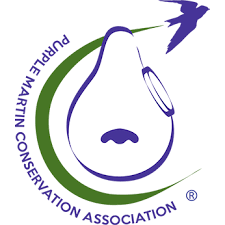
Copyright ©2025 Song Bird Essentials. All rights reserved.
Site Development: PennDev, LLC
The Eastern Bluebird is the state bird of Missouri. These small, brightly colored birds (males have a blue upper body, red breast, and white belly; females look similar but are slightly larger and duller in color.) Their population declined as suburban developments grew and their preferred habitat (farmlands, forests and grasslands) shrank, but bird lovers have become more attentive to their needs.
They live year-round in many parts of the state and readily nest in man-made boxes, so there's a great deal of local interest in attracting these "harbingers of spring."
Bluebirds typically eat insects and fruit, so planting native plans like American Bittersweet is a great way to attract and help them. They also love mealworms, which at 50.4% protein, are an excellent nutrition source!
They will eat mealworms from a cup or pan, but Bluebirds will rapidly consume whatever you put out. Bluebird Feeders force the bird tö go through an entrance hole to find the worms, and most other birds will not do so. They will also eat Sunflower Kernels from Songbird Essentials Spiral Feeders.
While commercial suet nugget treats for Bluebirds are available, suet it easy and inexpensive to make at home and makes a great project to do with kids on rainy days. Mel's favorite recipe for homemade Bluebird Suet comes from Martha Sargent, a founding member of the Bluebird Society. Some folks add a few chopped currents, cheeries or other dried fruits to the mx.
| No-Melt Peanut Butter Suet | |
| 1 C. Crunchy Peanut Butter | 2 C. Quick-cook Oats |
| 2 C. Cornmeal | 1 C. Lard (no substitutes) |
| 1 C. White flour | 1/3 C. Sugar |
| Melt lard and peanut butter, then stir in remaining ingredients. Pour into square freezer containers in a1.5 inches thick layer. Cut to size, seperate blocks with wax paper and store in the freezer. | |
If you're patient and consistent, Bluebirds will also respond to whistles and other calls when your feeder is refilled — try it!
Eastern Bluebirds drink water from ponds, streams and birdbaths and seem to prefer running water versus standing water. Keep water sources fresh and clean, and in the winter, use heated birdbaths or bird bath de-icers.
Eastern Bluebirds are cavity nesters, and common natural nesting sites include tree holes, rotted out fence posts and old orchards. The entrance hole to a man-made bird house needs to be just the right size; for the Eastern Bluebird, that's 1.5" in diameter, with about a 4" by 4" floor.
Many customers use our Songbird Essentials Ultimate Nest Box. With Plexiglas on one side (so you can monitor the nest), a copper predator protector around the entrance hole, and an elevated mesh floor, it's provides durable shelter for Bluebirds and their young.
Place nest boxes at least 100 yards apart, since Bluebirds are territorial during nesting season. They will nest in boxes at varying heights from the ground, but putting them at 4 to 5 feet high makes it easy to monitor them.
It can be helpful to install a T-shaped perching cross approximately 10 to 20 yards in front of the nest box. The male acts like a tiny hawk when it has chicks, waiting patiently for an insect or beetle to show, then pouncing on it.
Fledglings can find their own food in about two weeks, but adults — and sometimes youngsters from the first brood! — will bring food to the family. This often continues until fall and sometimes Bluebird families stay together until spring.
Bluebirds do prefer more "open area" than other nesting birds, so heavily wooded yards will probably not attract them.
Sources for more info:
https://extension2.missouri.edu/g9429





